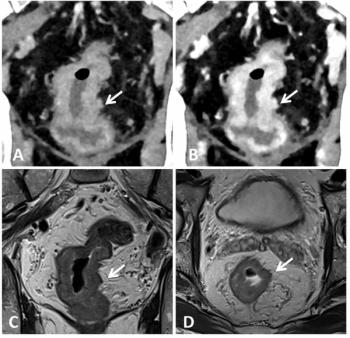
MRI Detected Atherosclerosis Indicates Future Heart Attack Risk
Using MRI to obtain two measurements in the abdominal aorta may help physicians predict which patients may go on to have a cardiac event.
MRI discovery and measurements of atherosclerotic areas in the abdominal aorta indicate the risk of future heart attack or stroke, said researchers in a study published online in the journal
The measurement of the mean abdominal aortic wall thickness and the amount of plaque buildup (aortic plaque burden) could predict the possibility of future cardiovascular risk. This demonstrates that atherosclerosis in arteries outside the heart is an independent risk factor for cardiovascular events.
A total of 2,122 healthy adults (mean age 44) underwent MR imaging of the abdominal aorta. The subjects were part of the Dallas Heart Study. Researchers then followed the subjects for 7.8 years. During that time, 143 participants experienced an adverse cardiovascular event (34 fatal) in which arterial blood flow was obstructed. These events were divided into cardiac or extra-cardiac vascular events, such as those that took place in the brain or abdomen.
Seventy-three events were non-fatal cardiac events, including heart attack or coronary revascularization) and 46 were non-fatal extra extra-cardiac events, such as stroke or carotid revascularization. Some patients had both a non-fatal cardiac and non-fatal extra-cardiac vascular events, such as stroke or carotid revascularization.
The researchers found that the increased abdominal aortic wall thickness correlated with a greater risk for all types of cardiovascular events. In addition, an increase in both measurements was associated with an increased risk for non-fatal extra-cardiac events.
“These MRI measurements may add additional prognostic value to traditional cardiac risk stratification models,” lead author Christopher D. Maroules, MD, said in a press release. Maroules is a radiology resident at the University of Texas Southwestern Medical Center in Dallas.
The abdominal aorta is often incidentally imaged. “Radiologists can infer prognostic information from routine MRI exams that may benefit patients by identifying subclinical disease,” Maroules added.
Newsletter
Stay at the forefront of radiology with the Diagnostic Imaging newsletter, delivering the latest news, clinical insights, and imaging advancements for today’s radiologists.



























